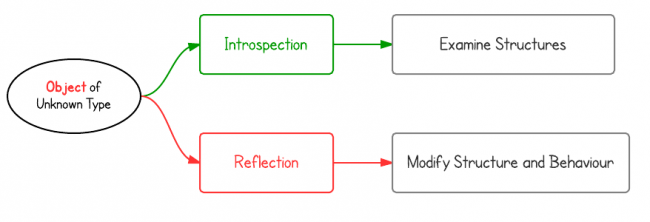

- #Java reflection get private field value how to
- #Java reflection get private field value full
- #Java reflection get private field value code
The mapper field is private and needs to be set during unit test setup.

#Java reflection get private field value code
The changes are marked yellow (to facilitate this, I had to use a raw text box here). Following code can be used to initialize mapper in REST client mock. In the following example, I have replaced autoboxing and unboxing with explicit boxing and unboxing. In the next section, I will describe what exactly is going on here. What have we done? We use Integer instead of int and make use of extensive autoboxing and unboxing. Public class .Screenshot showing the output "exit code 1" Java Reflection helps us to read or modify metadata related to class, fields, methods and constructors at run time.

Here is an example how you can run javac and javap: Otherwise, if the object is null, a NullPointerException is thrown. Accessing private fields in Java using reflection. If this field is static, the object argument is ignored. Method 3: Class.getDeclaredField(FieldName): Used to get the private field. getDeclaredField(String fieldName) or Class. We use below two methods for this purpose. How do you change the value of the private variable in Java using reflection If we want to access Private Field and method using Reflection we just need to call setAccessible(true) on the field or method object which you want to access.

If the type of this field is a primitive type, the field value is automatically boxed. Note: Through reflection, we can access the private variables and methods of a class with the help of its class object and invoke the method by using the object as discussed above. This reproduces the effect of object.fieldName. In Java, reflection allows us to inspect and manipulate classes, interfaces, constructors, methods, and fields at run time.
#Java reflection get private field value full
You can see this synthetic method if you run “javap”. You can find full example on GitHub: Returns the value of the field in the specified object. Java compiler creates a synthetic method which can be called by Outer$Inner class to modify “secret” field. This is second interesting thing about this code. So the question is how Outer$Inner class can access “secret” field. When JRE runs this code, Outer$Inner class is going to be considered as a separate class which means that Outer$Inner class is not allowed to access “secret” anymore. (also see this previous answer of mine: Access to private inherited fields via reflection in Java) Access to private inherited fields via reflection in Java. To access a private method you will need to call the Class.getDeclaredMethod(String name, Class parameterTypes) or Class.getDeclaredMethods() method. In our case, Outer class has a private field “secret” which is accessed by Outer$Inner class.
#Java reflection get private field value how to
At runtime, those classes will be considered as separate classes in the same package.īut we know that a private field can be only accessed by a class which owns this field. Java Examples The following examples show how to use. If you ask Java compiler to compile this code, it will create two class files “Outer.class” and “Outer$Inner.class”. There are a couple of interesting things about this code.įirst, Java compiler compiles these two classes above to two separate classes in the same package. Let’s take a look at the following example: You can use: String value (String) this.getClass ().getDeclaredField ('str'). How does Java compiler compile inner classes? It actually depends on what we have in go() method. But in some cases, this private field can be accessed by other classes in the same package even if neither A or B provide any accessors. This private field can be accessed by both A and B classes. It looks like the following:Ĭlass A has a private field “secret”. In this example, the getField( ) method returns. Class B is called an inner class, and class A is called an outer class. All the data access methods of Field take a reference to the particular object instance that we want to access. In Java, you can define one class B inside another class A.


 0 kommentar(er)
0 kommentar(er)
